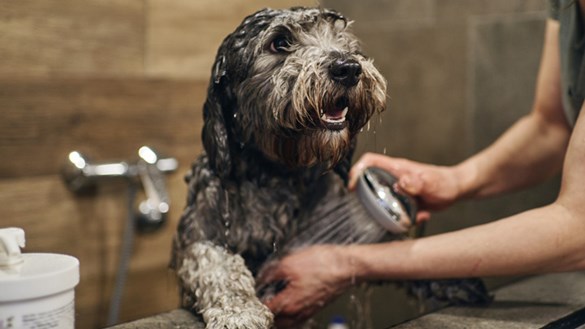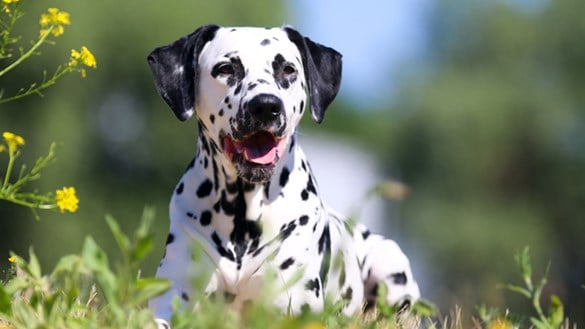Caring For Your Dog In Snow And Freezing Temperatures
Most dogs are more than happy to keep going for walks whatever the weather and many of them will love frolicking in the snow, but it’s important to take a little extra care of your dog when it’s icy, snowy and freezing cold.
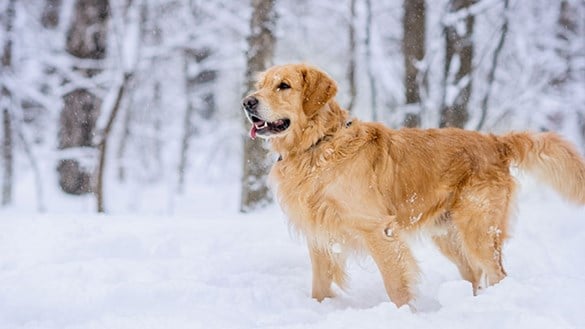
Keep your dog warm and safe in cold temperatures
Keeping your dog warm and dry is the best way to make sure they’re happy when it’s biting cold or snowing. Just like us, dogs can suffer hypothermia and frostbite, so helping their body temperature stay at a comfortable level is key.
Invest in a warm dog coat
If your dog feels cold easily (for example, if they’re very young, getting older or they have an underlying illness) you may want to invest in a warm dog-coat. Not only does it keep them well insulated, but it also helps keep them dry. Ideally, your dog’s coat should be warm and waterproof and shouldn’t slip around the body, or affect your dog’s ability to walk, run, or go to the toilet.
You’ll also want it to be machine-washable to keep it clean and free of bacteria. If it’s reflective so they can be easily be seen at night that’s a real benefit.
Take a dry towel with you on walks
It’s a good idea to take a dry towel with you on walks to dry off your dog should they get wet. When you come home, wash off any dirt or snow, dry them with a towel and then let them finish drying off in a nice warm environment.
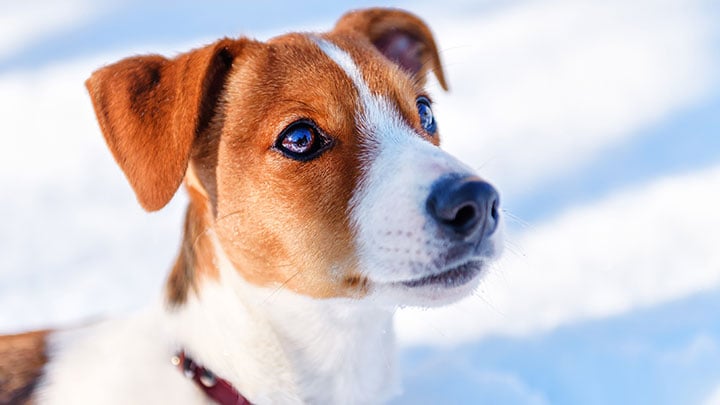
Check the weather before going out for a walk
Remember, long walks in cold, snowy conditions may also not be the best option for your dog. If it’s too cold for you, chances are it’s too cold for your dog. A short walk for them to do the necessary is perfectly okay.
Protect your dog's paws
Icy or snowy weather can wreak havoc on your dog’s delicate paws.
Rock salt is often used in combination with sand or gravel to grit icy roads and pavements, but it can damage paw pads. In fact, prolonged contact can lead to chemical burns, dryness, and painful cracking. Not only that, but rock salt is also toxic to pets if swallowed, so always wash paws as soon as you get home to prevent them from licking it off themselves.
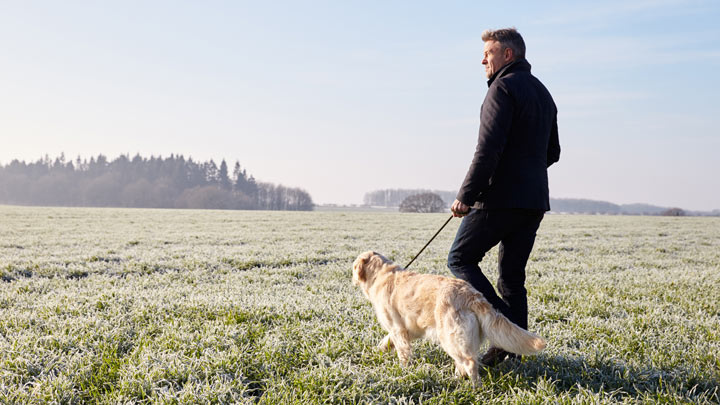
If your dog’s paws are looking chapped and sore, applying a small amount of dog-friendly paw balm can help alleviate the pain, promote healing and protect against grit.
Long-haired breeds often have excess fur around their paws which can become clogged with hard ice balls, causing pain and discomfort for your dog. Remember to regularly clip around the paws to keep it in line with the sole of their foot.
Dog boots provide protection against the elements, as well as extra grip on slippery surfaces. If your dog has particularly sensitive feet, opting for insulated, lightweight, and adjustable boots can keep them happy on cold, snowy walks.
Dogs in ice and snow
Many dogs get excited when playing in the snow but don’t let them get too close to frozen water sources such as lakes, ponds, and rivers. Thin ice can break easily, putting your dog at risk of falling underneath the ice. Even if it isn’t frozen over, winter water can be extremely cold and letting your dog walk around with a wet coat can leave them susceptible to hypothermia.
It’s also not a good idea to let your dog eat snow as too much of it can cause a stomach upset. However, if they try to eat a lot of it, it could be a sign of an underlying health issue such as kidney disease, Cushing’s disease or thyroid issues, so it’s best to speak to your vet for advice.
Some breeds with short fur and not much body fat can be affected by snow more-so than other breeds. This includes greyhounds, whippets, Italian greyhounds and more. They’ll still enjoy playing in the snow, as most dogs generally do, but you’ll want to limit their playtime to 10-20 minutes to avoid them coming to any harm.
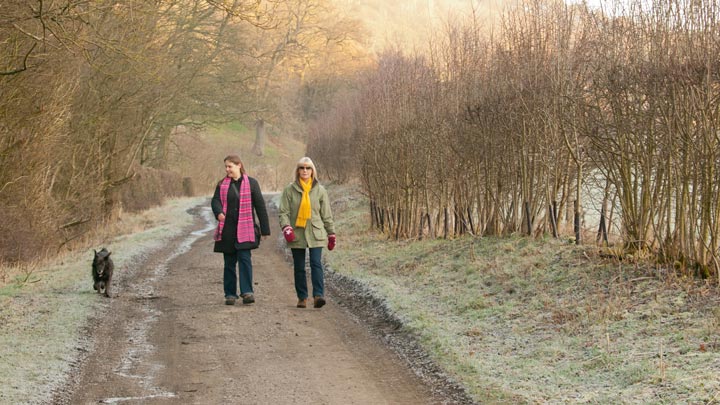
Antifreeze risk for dogs
Containing the toxin ethylene glycol, antifreeze can have a devastating effect on dogs when swallowed. Leaky car radiators can leave puddles of sweet-tasting antifreeze on driveways and just one tablespoon can cause acute kidney failure in dogs. Public fountains and water features also contain antifreeze to stop them from freezing over, so these should be avoided too.
Sadly, antifreeze poisoning is often fatal, but the quicker your dog receives treatment, the better their chances of survival. The first signs of antifreeze poisoning include staggering, excessive thirst and vomiting; these are soon followed by loss of appetite, diarrhoea, seizures, and ultimately, kidney failure. If you spot any of these signs in your dog, take them to your vet immediately.
Try to avoid using antifreeze, but if you must, look for the type that contains propylene glycol which is much safer for pets. Keep containers securely closed and always clean up leaks and spills as soon as possible.
Hypothermia in dogs
Hypothermia occurs when your dog’s body heat drops to extremely low levels, usually after being exposed to freezing temperatures or as a result of having wet fur in cold, windy weather.
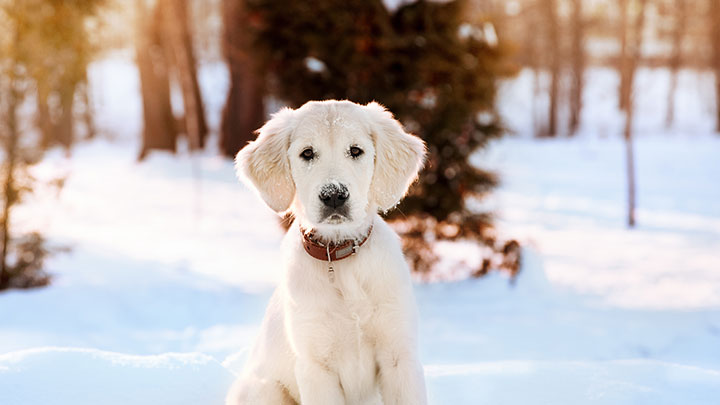
Symptoms include shivering (although this will suddenly stop when their temperature reaches dangerously low levels), pale lips and gums, low energy and a loss of coordination. Hypothermia is an emergency, so if you spot any of these symptoms, contact your vet immediately.
To prevent hypothermia in a cold snap, make sure your dog has somewhere warm and dry to go and try and keep them dry on winter walks – remember, lakes and rivers can reach freezing temperatures that can shock their system. Dogs with short, thin fur may also benefit from a dog coat to keep them warm, and always keep an eye on them when outside in the cold, if they don’t look like they’re enjoying themselves, then it’s time to bring them indoors.
Frostbite in dogs
Frostbite can also occur in very low temperatures which can freeze their extremities (the tips of their ears, tail and toes). Although not usually life-threatening, it can lead to hypothermia which can be fatal.
Skin can become very pale with a blue-white hue, due to the lack of blood flow, and ice can even form around the area. To prevent it from progressing and putting the local tissue at risk, apply a warm towel to the affected area. Don’t use a hairdryer or radiator to directly warm them up; this can cause burns and blistering. Instead, use tepid water to warm the area gradually and speak to your vet to check no additional treatment is required.
Consider puppies and older dogs
Just like humans, dogs that are particularly young or old can suffer more in sub-zero temperatures. The same goes for those with ongoing health issues, as their immune system is less effective in fighting off potential illness as a result of the cold weather. If your dog falls into one of these categories, pay extra attention to their welfare during cold, snowy snaps and always ensure they have a warm, dry space to sleep and rest in.
If you have any further questions or need further advice on how to keep your dog safe in freezing temperatures, speak to your local Medivet.
For more freezing weather advice for your dog, speak to your local Medivet practice.

Medivet Healthcare Plan
On average our clients save an average of £225 with the Medivet Healthcare Plan.
Learn more



